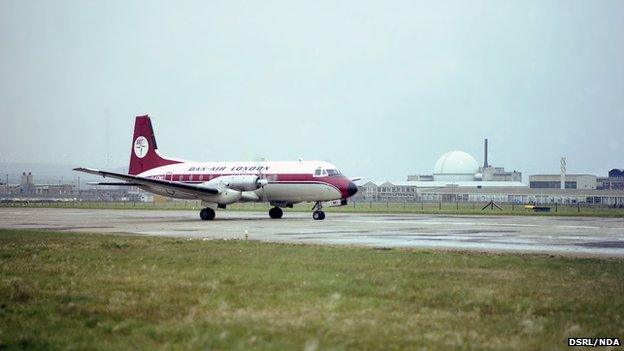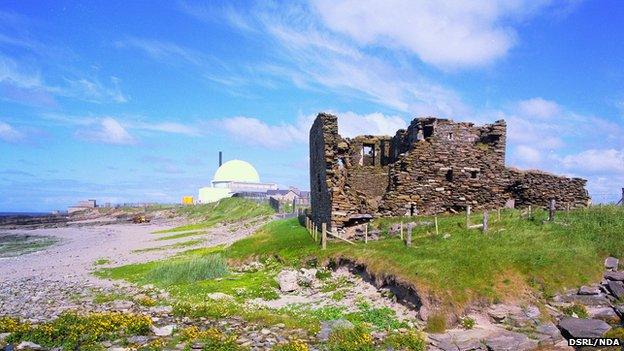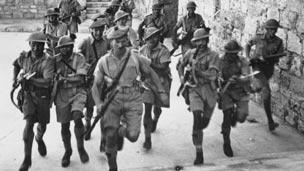Nukes and crannies: Previous uses of corners of Dounreay
- Published

A Dan Air flight with new PM Margaret Thatcher among its passengers arrives at the airfield at Dounreay
Highland Council wants to see areas of Dounreay put to new business uses but what was done with the land before the nuclear plant was built in the 1950s?
The site of the experimental nuclear complex on the Caithness coast is to be cleaned up by 2025.
Highland Council wants as much of the land as possible to be made available to new enterprises, such as the renewable energy industry.
In the past, the 136-acres (55ha) involved served other purposes.
Burial ground
About three years ago, archaeologists uncovered a large ancient burial cairn at the site of Dounreay's under-construction £100m nuclear waste dump.
No human remains were found in the cairn or its central cist, suggesting the site was robbed of its artefacts in the past.
The cairn dated from about 4,000 years ago during the Bronze Age.
Family stronghold
On part of the site stand the ruins of 16th Century Dounreay Castle.
It is one of the few surviving examples of an L-shaped fortified tower house.

The ruins of Dounreay Castle with the dome of the nuclear complex in the background
William Sinclair, of Dunbeath, descended from a younger brother of John Sinclair, third Earl of Caithness, built the castle in the 1560s.
It was badly damaged in 1651 by Oliver Cromwell's army during its Scottish campaign.
After the nuclear plant was constructed, tests involving radioactive materials were run in the castle's courtyard.
There was a leak and spillage and the ruins and nearby beach were contaminated.
A two-year project, which started in 1996, cleaned up the tower house and surrounding area.
Air base
An airfield was operated at Dounreay by the Admiralty during World War II.
In the Cold War years, the aerodrome was designated as a potential launch point for military aircraft in a feared war with the former USSR.
The airfield was also used for civilian aircraft.
Among the dignitaries who landed at the aerodrome in the 1970s were the Duke of Edinburgh and Margaret Thatcher, shortly after she became prime minister in 1979.
The aerodrome was closed in 1993 and the runway turned into a car park.
Camp for Jewish soldiers
More than 200 troops of the Palestine Group, an organisation set up by Britain to help fight the war against Nazi Germany, are thought to have been sent to a camp at Dounreay at the end of World War II.
The reason was that following the surrender of Hitler's forces in 1945, Jewish underground movements had become increasingly active in Palestine.

British soldiers in Palestine in the 1940s
Its members fought against British control of Palestine, and also Arabs.
The British government was suspicious of Jews who had been given military training during World War II, were living in Britain and now wishing to leave for the Middle East.
There were concerns they would join the underground in Palestine, or campaigns against the government in the UK.
These men were sent to the Engineering Training Centre at Dounreay to keep them away from London.
Britain eventually pulled its soldiers out of Palestine in 1948.
Farming
Land at Dounreay has been farmed for centuries.
A farm called Lower Dounreay was bought by UK Atomic Energy Authority in the 1950s for the construction of the nuclear facility.
Lower Dounreay's 1850s-built farmhouse was converted. It was demolished in 2003 as part of the decommissioning of the site.
- Published15 November 2013
- Published7 December 2010